How to Manage Products in Shopify: Reorder Variants

In the following article, we explore how to reorder variants in Shopify. You will learn two different techniques: one for solo editing and another one for bulk product updates. If you deal with a few products, choose the first way. If you need to update the entire catalog, go with the second option. Below, we explain the principal difference between the two of them opportunities so that you can reorder variants in Shopify in a manner that suits your business well.

How to Reorder Variants in Shopify
Let’s suppose, you need to edit your product catalog in Shopify – reorder variants first. As we’ve already mentioned, there are two ways to do so. Let’s see what actions to take to edit variants on a per-product basis.
Change the display order of variant options and values per product
In Shopify, variant options and values are displayed in a particular order on your website. As a store administrator, you can easily change it manually. Follow these steps to reorder variants in shopify:
- Go to your Shopify admin and then open its Products section.
- Choose a product that you want to apply changes to.
- Scroll down to the Variants section and do the following:
- Use the drag-and-drop handles to rearrange the variant option order. Such handles are available next to every option.
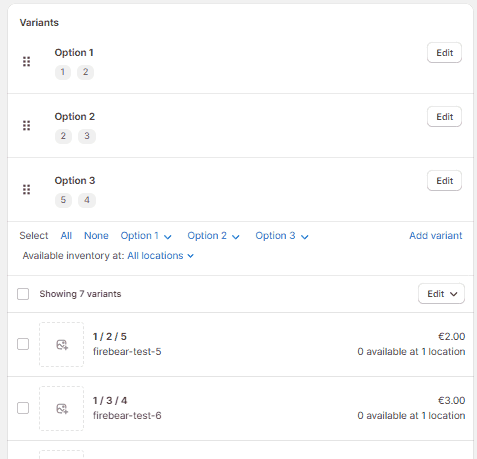
- Also, it is possible to rearrange the option value order. Click Edit next to the option and use the corresponding drag-and-drop handles.
- Use the drag-and-drop handles to rearrange the variant option order. Such handles are available next to every option.
- Click Save.
That’s it! Now, you know how to reorder variants in Shopify per each product individually. But what if you need to edit dozens or even hundreds of products? You will find the answer in the following section.
Bulk Reorder Variants in Shopify
A mass product update is something that you can easily do with the for Shopify. Let’s zoom right into the steps necessary to do that.
Step 1: Launch a New Export Profile to Export Variants from Shopify
You can create a new export profile under your Shopify Admin -> Apps -> Firebear Import & Export Tool -> Export by clicking the New Profile button.
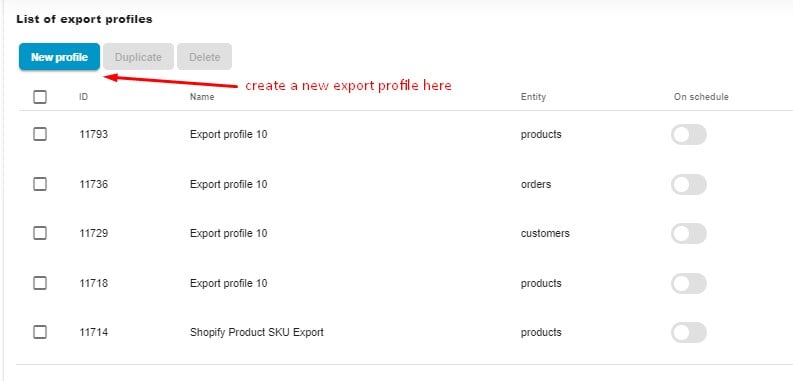
On the Configure export screen, apply the following changes:
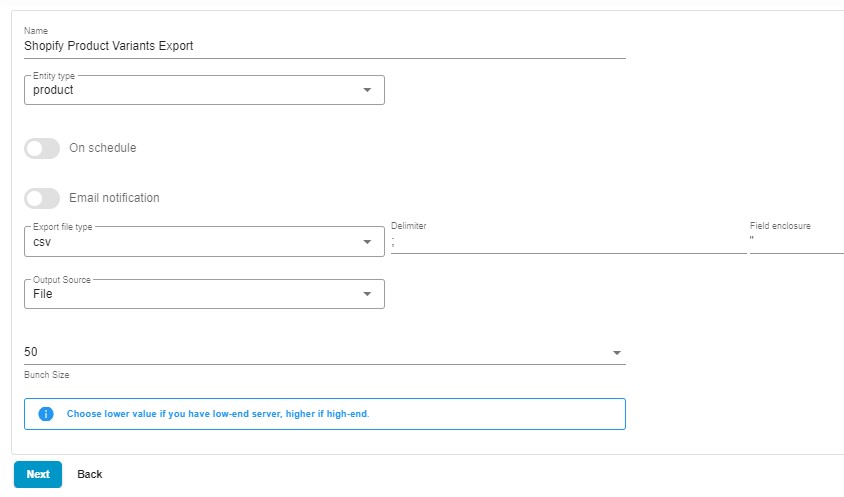
- Specify a name for your profile, for instance, Shopify Product Variants Export.
- Choose an export entity – Products.
- You don’t need to automate your Shopify product variant export if it is not a regular procedure.
- There is also no need to configure email notifications this time.
- Choose your file format. You can go with CSV or export variants as XML and XLSX files or straight to a Google Sheets spreadsheet. In the case of CSV, you can also specify a custom delimiter and field enclosure. Use the values that our app adds automatically.
- Choose File as your export source to download your product variants from Shopify. Alternatively, you can send your backups over FTP, straight to Google Drive, or directly to a Google Sheets spreadsheet as we’ve just mentioned.
- If you have a server with limited resources, you can choose a lower bunch size to reduce the load.
- Click “Continue” to proceed to the mapping screen.
Since you don’t need to update the entire scope of product data, use the mapping screen to export only the columns essential for your update.
Unselect the columns that you don’t need.
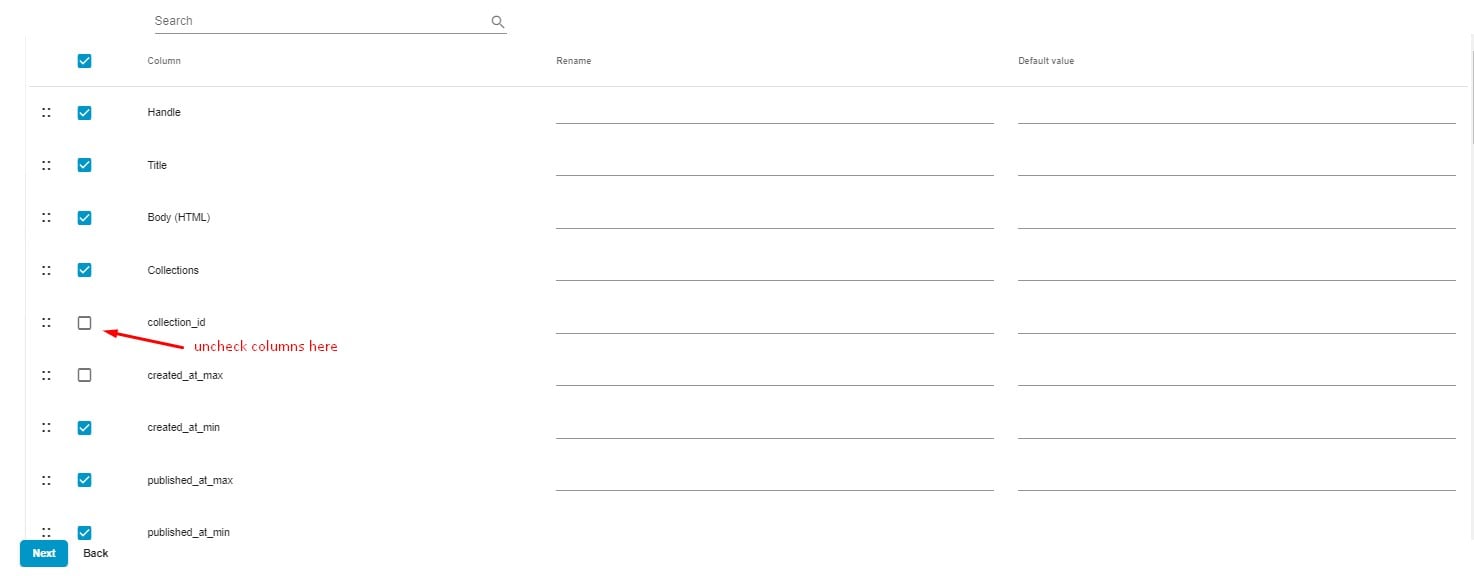
You may also use filters to transfer only particular products.
Hit the + button to create a new filter. Choose a filtering parameter, such as a vendor, and then specify values to narrow down the selection of products in your export file.

Now, click the Save & Close button to save your Shopify backup profile and Export to transfer products to reorder variants in Shopify. You can download your data file when the export procedure is complete, or it will be available at another selected destination.
Step 2: Reorder Shopify Variants in Bulk
Now, change the row order for variants to rearrange their position. The good news is that you don’t need to change any product data. It helps you reduce disorder and lower the risk of human errors.
Navigate to a product you want to edit and rearrange its variants however you wish.

Now, save your file and proceed to the next step.
Step 3: Import Product Variants to Shopify
That’s almost all. You need to re-import your product variants back to Shopify.
Proceed to Apps -> Firebear Import & Export Tool -> Import and hit the New Profile button to create a new import profile for product variants.
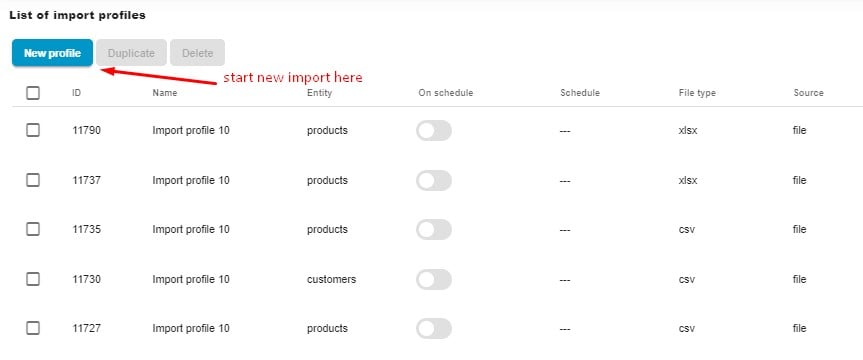
Now, apply basic configurations to initiate the update:
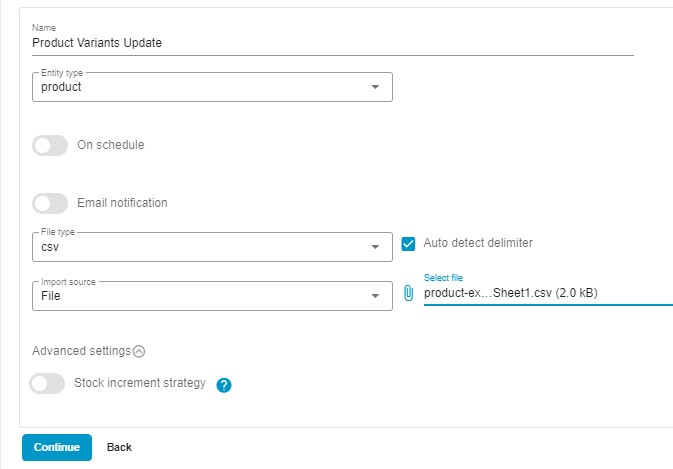
- Name your new import profile: Product Variants Update.
- Choose the entity to import: Products.
- Note that you don’t need to enable Shopify import automation or notifications.
- Select a file format: CSV if you’ve used it for export or XLSX, XML, and Google Sheets if you store your product variants in one of these forms. In the case of CSV, activate the auto-detect delimiter feature.
- Choose your import source depending on where you store your update. If it’s your computer, choose File from the Import source dropdown, click the paperclip icon, navigate to your file, and select it. You can also import files to Shopify via FTP or from Google Drive, Google Sheets, or URL.
- Keep the Stock Increment Strategy toggle disabled to transfer the current product qty specified in your update file.
You don’t need to do anything with your mapping section, so proceed to the next step.

You can examine whether your product variant Shopify update is correct on the Preview screen. The Import & Export Tool displays the products you import even before uploading them.

Click the “Save” button to save your import profile. Next, click the “Import” button to reorder variants in Shopify.
Shopify Reorder Variants Results
Now, let’s see how the update process impacts your variants’ positions. It is the original sort order:

That’s how it looks in a data file after the export.

Let’s reorder the variants’ positions. Drag the corresponding rows to new places. Do that on a per-product basis. Don’t drag variants to products they are not related to.

After you edit the data file and re-import it, you will see the following new variants’ order:

Final Words
Now, you know how to reorder variants in Shopify. This procedure, however, is not the only one the Import & Export Tool is capable of. You can use our app to manage your store data in bulk, connect Shopify to external systems, and automate various routine processes associated with data transfers. For more information about the app and how it enhances Shopify to reorder variants and implement multiple other tactics, contact us and read our Improved Import & Export Tool Manual.

